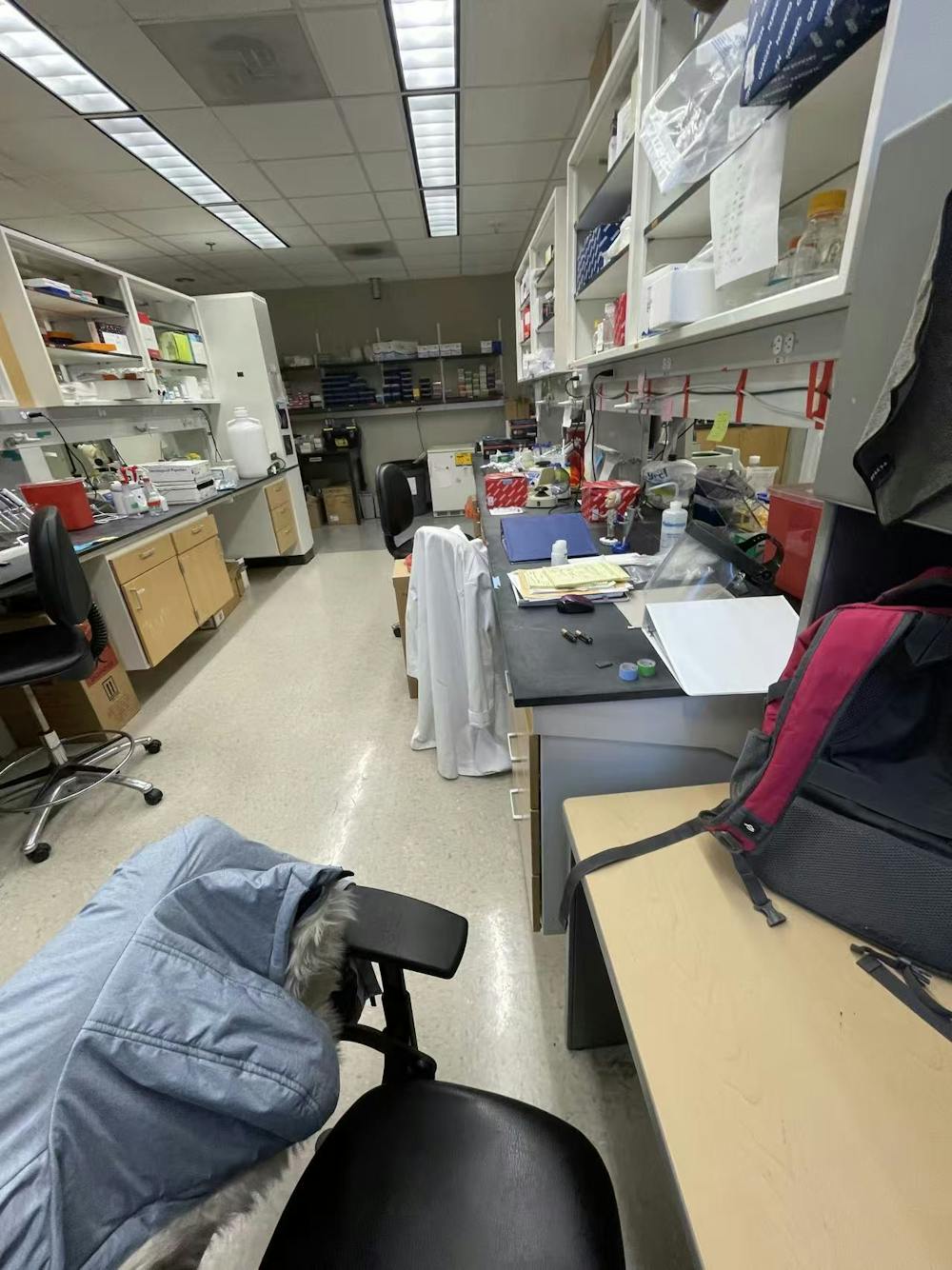
“When I first did the hearing experiment on mice, it was so straightforward — I could see the connection right away between what we were testing and the bigger picture of hearing loss,” Kate Xie shared in an interview with The News-Letter. As a senior double majoring in Molecular and Cellular Biology and Writing Seminars, Xie is involved in research investigating hearing loss and neural pathways involved with it.
Coming into Hopkins on the pre-med track, Xie knew she wanted to pursue research from the very beginning. For her, research is a way to explore her interests in science and medicine while also building practical skills.
“I kind of knew I wanted to do research,” she said. “It’s a way to get involved in science beyond the classroom and see if it’s something you’re really interested in.”
Xie’s research journey at Hopkins began in her sophomore year, in an oncology lab at the School of Medicine, where she gained early exposure to cancer-related projects. Later on, she transitioned to the Doetzlhofer Lab, which studies the neural pathways of hearing and the regenerative mechanisms of hair cells in the mammalian auditory systems. These hair cells are critical for hearing, yet much about their biology remains unknown — which is something her lab aims to uncover.
Having spent more than a year in the lab, Xie now works closely with a postdoctoral researcher, River Huang. Their current project utilizes mouse genetic models to study the molecular mechanism underlying the regeneration of inner and outer hair cells, which could potentially aid in the recovery of deafness and balance disorders due to the loss of hair cells. For Xie, her responsibilities have gradually expanded over time to include gene staining, confocal microscopy, quantitative PCR (qPCR) and conducting hearing tests on transgenic and wild type mice. Along with reviewing scientific literature, these tasks granted her the opportunity to explore both the technical aspects of experiments and the underlying questions awaiting to be resolved.
Of all the experiments she has performed, Xie’s favorite so far is the hearing test conducted with mice. In this experiment, as she described, mice are placed under anesthesia and fitted with a small ear device inside a soundproof machine, where different frequencies are played to assess their hearing capacity.
“I think just being able to try new experiments is really interesting,” she said. “Knowing that what we’re doing could possibly be used in the future to treat hearing loss is [meaningful.”
Most afternoons after her class ends, Xie heads to the medical campus around 4–5 p.m. She then checks in with her PI, outlining a list of tasks for the day. Recently, she is spending most of her time conducting qPCR to compare gene expression in transgenic and wild-type mice. Once the results come in, she will move on to staining tissue samples, preparing slides for microscopy and analyzing the images with computational tools.
Many of Xie’s experiments involve lengthy and painstaking procedures, often accompanied by the risk of failure and unpredictability. She recalled an instance involving a transgenic mouse that appeared positive on PCR gels but failed to show expected results in qPCR. After continuously trying with new primers and repeated runs, the data still presented unusually low levels of expression.
“It can be a long troubleshooting process,” she admitted. “All you can do is to keep tracing back the steps to see what went wrong.”
Looking ahead, Xie plans to continue working in her current lab until graduation while also exploring other research areas. This semester, she began work in a lab studying calcification diseases, which is a category of disease caused by the accumulation of calcium salts in the body.
“In the short term, I just want to learn more techniques and learn how to do them well,” she emphasized. “There’s always a little bit of a learning curve.”
For Xie, research has provided a glimpse of life beyond academics.
“It connects me to the real world,” she reflected. “As students, we’re focused on classes, assignments and tests. But going into the lab, seeing postdocs and PIs come in every day — it gives me a sense of what careers in my field could look like and how my life can extend beyond college and into the real world.”
When asked about her long term goals, she expressed her interest in the field of pediatric oncology. For aspiring undergraduate researchers, Xie encourages students not to stress about getting into research right away.
“I didn’t start until sophomore year, and I know friends who started junior or senior year,” she said. She added that persistence is key when reaching out to labs. “The two main ways I got into research were through cold emailing and through Smile. You can’t be afraid to follow up because professors are busy and get a lot of emails every day. But eventually, you will get something.”
Research on the Record spotlights undergraduate students involved in STEM research at Hopkins. The goal of the column is to share reflections on the highs and lows that Hopkins students experience in their contributions to undergraduate research. If you are an undergraduate researcher interested in being profiled, reach out to science@jhunewsletter.com.





